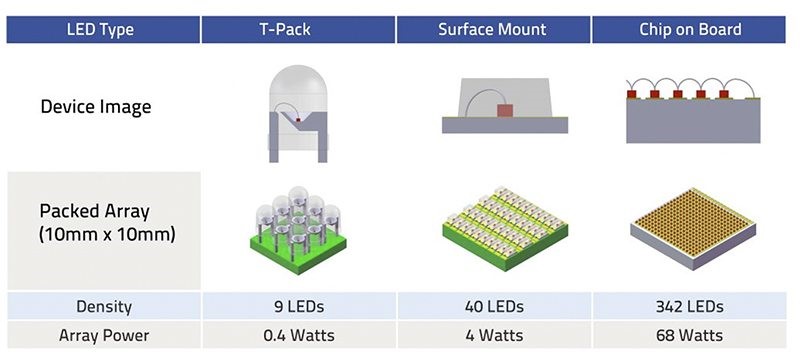
Published
by Stefan Lutter – Manager Product Management, AES
Advanced Electronics Solutions
Over the last couple of years, we have monitored an interesting development regarding cooling solutions for LED applications. As LED types have changed from a T-Pack to Chip on Board packaging technology and have overall reduced in size, the number of LEDs per array has tremendously increased. This has resulted in a higher heat density and heat load which has increased the challenges in cooling the package. Customers have the choice between several options, using passive cooled heat sinks or graphite foam via air cooling ending up in liquid cooled systems with pumped liquid or a two-phase cooling solution. Currently, customers are mainly looking for customized and dedicated solutions for their needs. Individual designs for each application are developed in cooperation between both parties. This process begins with first sketches, 3D simulations and test samples and ends with optimized coldplates for specific use cases. This process is in place because customers' operating areas are very different, including areas such as LED street lighting, entertainment or home lightning and automotive LED headlights. Other applications range from private to professional horticulture lighting for indoor growing or farming applications, UV irradiation for water curing/cleaning as well as several other industrial applications. At Rogers, we can combine a highly customized, tailor-made design for very customer-specific requirements with a standardized and high-volume production capability and experience.
©ProPhotonix
LED array cooling
As LEDs are very temperature sensitive and need to operate in a defined temperature range, heat management is an important topic for the package design.
Rogers MCC Figure 1
Together with our customers we conducted several design studies to find out the best fit for their needs. Rogers MCC illustrated in Figure 1 gives you a better overview of customers that needed coolers for lengthwise orientated arrays which cover almost the entire cooler surface. Other customers were more interested in having focused cooled areas and used surrounding cooler surface for better heat spreading. The main challenge which was identified was how to keep the LED within its specific temperature range and having a very consistent temperature on the complete chip.
Why are customers choosing Rogers’ micro channel cold plates?
Our curamik® Cooling Solutions offer a suite of advanced liquid cooling solutions powered by the state of the art curamik bonding process. The layers are hermetically combined without any additional soldering or adhesives. These innovative liquid coolers feature copper foil channel structures (<250 micrometer channel width) that are bonded into a tight block using the curamik process. By using etch copper foils, we enable a very flexible design and can optimize quickly after first prototypes. Compared to standard solutions, Rogers coolers are four times more efficient than traditional liquid cooling module structures. The coolers' narrow channels provide a larger, highly conductive copper surface area to the cooling medium than many other solutions. This is the secret of the curamik coolers' performance. If necessary, coolers can be integrated with ceramic substrates, enabling direct component assembly and electrical isolation from the cooling circuit.
Do you have any questions or require additional information about our coolers? Please contact us, if you need assistance.
Related Products:
curamik Cooling Solutions
Tags:
Olivier's Twist Blog
Published on Sep 07, 2021

